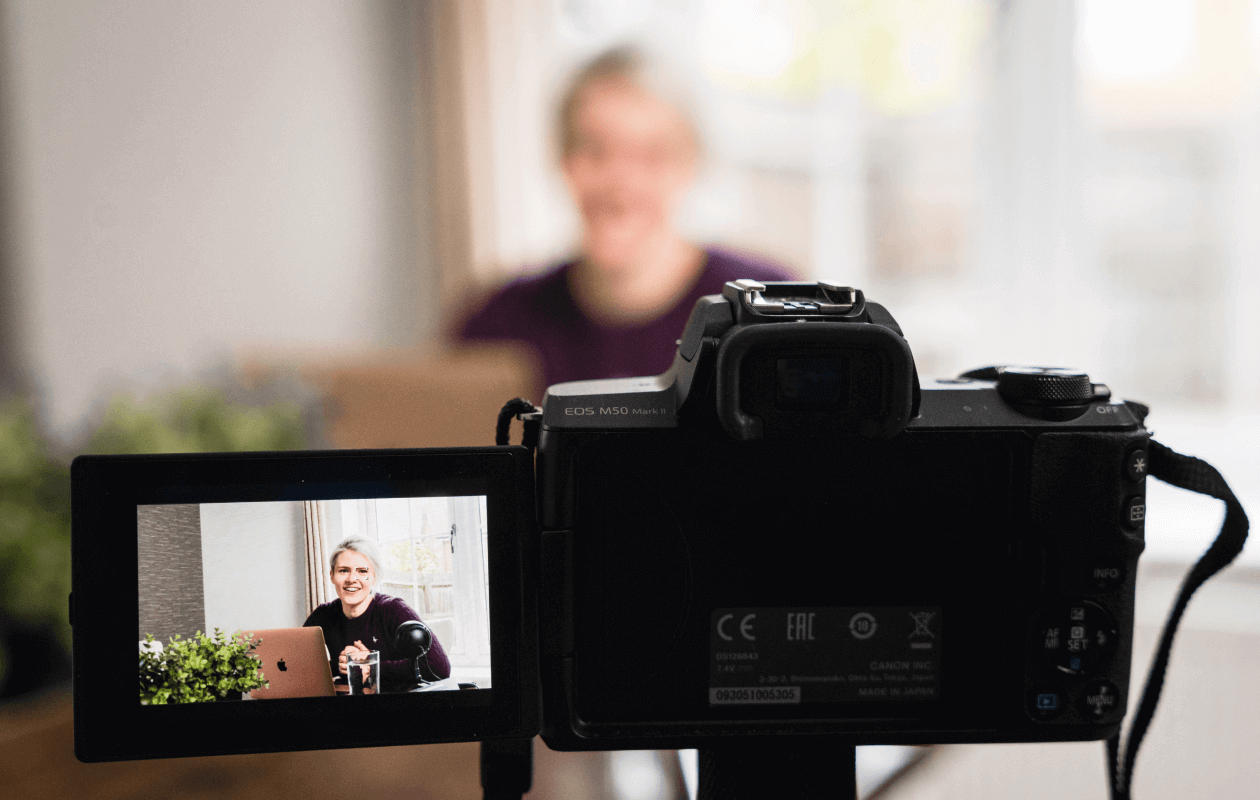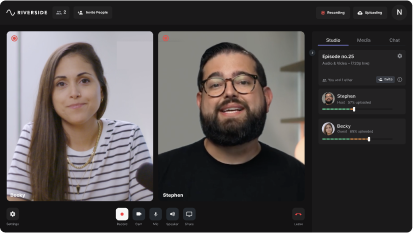Last Updated
May 26, 2023
Webinar Glossary: A Complete List of Must Know Webinar Terms
.jpg)
While you don’t need to be a tech expert to understand how to run a webinar, it does help to understand all webinar-related terminology. If you’re unsure where to start, don’t worry! We’ve got you covered with our A-Z webinar glossary.
Read on to discover all the terms you need to know before running your first webinar. We cover everything including attendees, simulcasting, and more!
Webinar terminology definitions
Attendees
Attendees are people who register for a webinar and join it at the scheduled time.
Other terms for attendees include participants and audience.
Automated Webinar
Automated webinars are pre-recorded webinars scheduled to run at fixed times and don’t require a live host to be present. These webinars have a live look and feel to them.
Bandwidth
Bandwidth refers to the amount of data transfer your internet connection can handle. Having a high-bandwidth connection will ensure that your webinar experience is smoother and more seamless.
Bandwidth requirements are different for different webinar platforms. For example, Zoom requires a bandwidth of 1.2Mbps (up/down) for a 1:1 720p HD video and 2.6Mbps/1.8Mbps (up/down) for a group video call.
Breakout sessions
A breakout session in a webinar is when participants in the main room are separated into smaller groups in rooms called ‘breakout rooms’ for group discussions.
Breakout rooms are designed for participants to discuss specific ideas and topics and collaborate with one another in smaller groups.
Content Marketing
Content marketing is a process of creating content that informs, engages, attracts, and acquires a target audience. Using a webinar as a content marketing tool is a highly effective way of gaining customers.
Conversion rate
This refers to the percentage of users who have completed a desired action.
For webinars, there are usually three types of conversion rates.
- The percentage of people who visit the landing page and then sign up as a participant
- The percentage of registered participants who attend the webinar.
- The percentage of webinar attendees who register for events further along the marketing funnel.
Cloud recording
Cloud recording is when you save the recordings of your webinar to an online remote storage system (often called the cloud), rather than locally on a computer.
Cloud recording is a feature in most webinar platforms, however, if your computer crashes or the internet fails, the recording can be lost. In such scenarios, it's crucial to use webinar software like Riverside, that continuously records and saves footage to the cloud as you record.
CTA
A call-to-action or a CTA is an instruction to the audience to take a specific action step.
Some examples of webinar-relevant CTAs include ‘Save My Free Spot’’ or ‘Reserve My Seat.’
Dial-in
Dial-in is a webinar feature that allows attendees to join a webinar using a phone.
Engagement
Attendees can engage with a webinar in different ways. Some popular forms of webinar engagement include poll questions, emojis, live chat, and live call-ins.
Evergreen Webinar
Evergreen webinars are ones that remain relevant and accessible even beyond the initial presentation.
By using an evergreen webinar, you can present the same information to future audiences without having to go live each time.
Green room
A green room is a webinar room where organizers prepare before a live event. Here, they can test out their equipment and do last-minute checks. Whatever happens in the green room isn’t broadcasted to other attendees.
Guest Speaker
A guest speaker is someone who is invited to talk at the webinar by the hosts.
Live webinar
A live webinar is one in which the host and the attendees interact in real-time.
This is different from an automated webinar in which the material is pre-recorded.
Local Recording
Local recording allows attendees to record the webinar video and audio directly on their computer instead of over the internet.
With local recording, webinar platforms can record high-quality audio and video without the disruptions online recording is known for. Some webinar platforms (like Riverside.fm) even allow you to record locally in 4K.
Moderator
A moderator is a person responsible for running the webinar smoothly.
Roles of a moderator include:
- Responding to attendee chats
- Uploading webinar materials to the webinar room
- Acting as an intermediary between the speaker and the audience
- Solving technical issues during the broadcast
- Moderating the chat
Podcast
A podcast is a series of audio episodes that focuses on a particular theme or topic (note: nowadays, there are podcasts in video format as well).
Webinars can be repurposed into podcasts to reach a larger audience than the original webinar attendees.
Polls
A webinar poll aims to get attendees' opinions on a particular topic. Polls are a fantastic way to increase audience engagement and get insights and feedback from your audience.
Presenters
Presenters are the main speakers of a webinar who deliver a presentation or explain a topic.
Q&A session
A Q&A session is a question and answers session held at the end of a webinar. This session gives your audience an opportunity to ask you questions about the webinar topic.
Raise Hand
A lot of webinar software has a raise hand feature. This is generally a button, participants can use to signal to moderators that they wish to speak.
Recurring Webinar
A recurring webinar is one held regularly, either daily, monthly, or weekly.
Registrants
Individuals who register for a webinar are called webinar registrants. In most cases, registration is done via an online form, a third-party website, or through an email invitation.
Registration form
Registration forms are used to register for webinars. This form could ask participants’ for their name, email address, company name, or other information.
Repurposing a webinar
Repurposing a webinar involves converting a webinar into different formats. It is usually done to extract the maximum value out of a recording.
Some ways of repurposing a webinar include:
- Converting it into a blog post
- Converting it into a white paper or ebook
- Converting it into a podcast
- Uploading webinar slides to Slideshare
- Taking different highlights from the webinar and sharing them on social media platforms such as YouTube, LinkedIn, Facebook, and Instagram. (You can easily do this with Riverside’s Clips.)
RTMP
RTMP (Real-Time Messaging Protocol) is a method of streaming that allows audio, video, and data to be transmitted in real-time from an encoder to various video platforms.
Using RTMP, webinar platforms can stream to Facebook, YouTube, Twitch, LinkedIn, Vimeo, etc.
Scheduling a webinar
Scheduling a webinar involves setting up a date and time for the webinar.
Screen share
During a screen share, your computer screen is broadcasted to your audience. Screen shares can be done either during a live event or a pre-recorded event. Presentations and product demonstrations are the most common use cases of screen shares.
Simulive
A simulive refers to a type of webinar that is both live and pre-recorded.
How does that work?
Usually, the webinar is recorded ahead of time and then aired at specific allotted time slots. Once the pre-recorded webinar is live, the audience can interact with each other and a moderator (the live aspect).
Simulcasting
Simulcasting is when you broadcast a live video such as a webinar or podcast to various platforms (LinkedIn, Facebook, YouTube, Twitter, Twitch, etc.) simultaneously.
Speaker
Virtual background
A virtual background is a simulated image or video used as a participant’s background during a webinar.
Virtual backgrounds are used to create a professional look, make webinars visually appealing, or hide an attendee’s real-life background.
Virtual event
A virtual event is a conference or event that happens in an online space instead of in a physical location.
Virtual events are more complex than webinars. They host a larger number of people and go on for days (rather than just hours in the case of a webinar).
Waiting room
This is a room where a participant waits alone until the host of the meeting admits them to the main webinar room.
A waiting room is used whenever the host and speakers need to prepare in the green room before allowing attendees in.
Webcam
A webcam is a camera that is used to capture video and images for online communication.
Some webcams have better video quality than others, so make sure you choose the right one.
Webcast
A webcast is an online broadcast of a live event or a pre-recorded event on the internet. Webcasts are designed to reach a larger group of people.
Webinar chat
A webinar chat is a feature that allows attendees and speakers to talk with one another in real-time through text.
Webinar Host
A webinar host is responsible for organizing and conducting a webinar, introducing speakers, and carrying out Q&A sessions.
Webinar landing page
A webinar landing page is a page on your website where you promote your webinar and try to convert viewers to sign up for your event. Good webinar landing pages have a compelling headline, benefit-focused copy, and a clear CTA.
Webinar Metrics
Webinar metrics are those that indicate the success of a webinar.
Some important metrics include:
- Number of webinar registrations
- Landing page to registrant conversion rate
- Registrant to attendee conversion rate
- Live webinar views vs. recording views
- Attendee feedback
- Audience engagement
Webinar microphone
It is the audio device used to record the voices of the webinar participants.
If you’re hosting a webinar, it’s important to choose quality microphones that produce professional-grade sound if you want your webinar attendees to take you seriously.
Webinar Platform
It’s an online tool that is used to conduct presentations, seminars, workshops, meetings, and other kinds of group events.
Some of the best webinar platforms include Riverside.fm, Demio, and Livestorm.
Whiteboard
A whiteboard feature on a webinar platform allows participants to write and draw with typed text, freestyle lines, and shapes.
Create your own Webinar
Now that we’ve covered all these webinar terms, you’re a step closer to understanding how to run a webinar. If you’re thinking about creating your own webinar we highly recommend you read about how to record a webinar and check out what webinar software is most suitable for you. Good luck and we hope you’re feeling much more confident about understanding webinars!















-(1).png)
.png)

 (1).webp)
.webp)
.webp)








